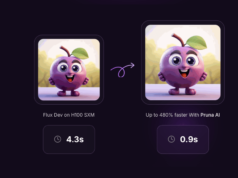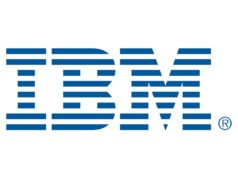
- Register
- Login
24°C
- Article
- . (0)
- Related content
- Company info
While Apple has started to release more orders to AMD for high-end GPUs needed for new iMac series since September 2017, Taiwan-based outsourced semiconductor assembly and test (OSAT) companies has stepped up 2.5D packaging for the GPUs, according to supply chain sources.
The new iMac series adopt GPUs supplied by AMD, with the super workstation-class 27-inch iMac Pro equipped with Radeon Pro Vega 56 GPU and 8GB HBM2 memory or Radeon Pro Vega 64 and 16GB HBM2 memory. The high-end GPUs are packaged using 2.5D technology while the general-spec GPUs use flip-chip packaging process. Siliconware Precision Industries (SPIL) handle the packaging for the iMac GPUs, with testing support from King Yuan Electronics, the sources said.
These Taiwan OSAT firms will be busy carrying out 2.5D and flip-chip packaging operations through the end of 2017 in line with the rollout of Apple’s new iMac series, the sources said.
AMD’s Vega series GPUs are fabricated by GlobalFoundries on 14nm process, but Taiwan Semiconductor Manufacturing Company (TSMC) has won the order from AMD to fabricate its NAVI GPUs using 7nm process technology. As TSMC is also keen on making deployments in advanced packaging technologies, it will continue to maintain coopetition relationships with local OSATs.
At the moment, ASE and SPIL are major players in the 2.5D IC packaging market, able to compete against TSMC’s CoWoS (chip on wafer on substrate) 2.5D packaging technology, industry sources said.
TSMC will apply its CoWoS 2.5D packaging technology mainly to high-end GPUs or FPGAs needed for AI (artificial intelligence)-based supercomputer systems.
Both Nvidia and AMD hope to use GPUs as the computing cores of AI systems, including high-end graphic cards, vehicle-use platforms, and cloud computing. And accordingly, both 2.5D and 3D packaging technologies that can integrate high-end GPU chips and high bandwidth memory chips will become more popular with semiconductor customers, the sources said.
-
Graphics card vendors to see shipments rise in 2017
IT + CE | 21min ago
-
Taiwan September unemployment down
Bits + chips | 26min ago
-
Qualcomm gains further share of smartphone AP market in 1H17, says Strategy Analytics
Bits + chips | 41min ago
-
Taiwan market: iPhone 8 devices best-selling smartphones in September
Mobile + telecom | 43min ago
-
Taiwan forms Green Energy Research Consortium
Green energy | 1h ago
-
North American semi equipment industry billings continue slide
Bits + chips | 1h 45min ago
-
Taiwan September manufacturing production index up on year
Bits + chips | 2h 17min ago
-
Arima Optoelectronics and Toshiba reach settlement on patent lawsuit
Before Going to Press | Oct 23, 21:59
-
Sony looks to expand CIS presence in car electronics market
Before Going to Press | Oct 23, 21:42
-
Powertech expects growth in 4Q17
Before Going to Press | Oct 23, 21:41
-
Huawei ships 112 million smartphones in January-October
Before Going to Press | Oct 23, 20:52
-
Aleees constructing new plant in China
Before Going to Press | Oct 23, 20:49
-
Semiconductor firms eye edge-computing opportunities
Before Going to Press | Oct 23, 20:45



- China AMOLED panel capacity expansion forecast, 2016-2020
This Digitimes Research Special Report examines the China AMOLED industry, focusing on the expansion capacity of the makers, the current implementation plans of major smartphone vendors in the market and the technological hurdles faced by the China makers.
- Global AP demand forecast, 2017-2020
Digitimes Research expects global AP shipments to surpass the 1.9 billion mark in 2017, with smartphones remaining the main application. Qualcomm will be leading the market in 2017, as other players continue playing catch up and scramble for funds to invest in more diverse applications.
- Global notebook shipment forecast, 2017 and beyond
This Digitimes Special Report examines key factors in the notebook industry, including products, vendors and ODMs, that will affect total shipments in 2017 and through 2021.







![[CES 2026] Quest For Perfect Color…Samsung To Push](https://loginby.com/itnews/wp-content/uploads/2025/12/CES-2026-Quest-For-Perfect-Color…Samsung-To-Push-100x75.jpg)
